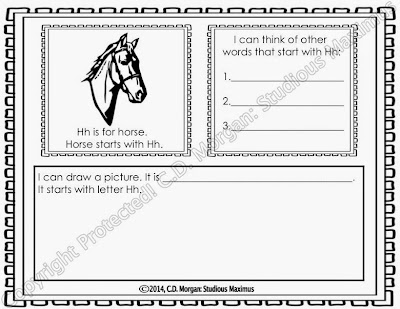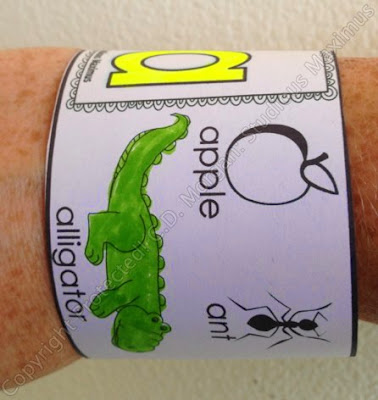Research shows that letter names and letter sounds
automaticity is key to a child’s success as a fluent reader, later on. We want
our students/children to memorize the letters and letter sounds and quickly and
correctly identify them.
Here are some great ideas on how to make sure that
children/students learn all the letters and letter sounds. These activities are
useful and beneficial as you teach each letter of the alphabet and also as
intervention tools for students/children who still struggle to master letter
names and letters sounds.
Check out all the sample pages below! These are ALL part of ONE PRODUCT (125 pages)!!!
For each letter of the alphabet, students practice writing the letters (both capital and lowercase), find and circle the specific letter, rainbow write large print letters, trace large print letters, color the large print letters.
For each letter of the alphabet, students practice writing the letters (both capital and lowercase), find and circle the specific letter, rainbow write large print letters, trace large print letters, color the large print letters.
We all know that there are tricky letters that some
children/students struggle with. Through these hands-on activities, they will
be able to correctly identify these letters. Students cut and paste lowercase
letters and match them with the corresponding upper case letters.
For a better understanding of correct letter formation:
- Students use Venn Diagrams and compare and contrast letters based on straight vs. curvy lines.
- Sort letters based on “height”: small/short letters vs. tall letters.
The more chances we give out students to manipulate and
visually make a distinction amongst letters, the better they will perform and
have a higher accuracy rate.
For each letter of the alphabet,
students: read and trace short sentences all related to the given letter of the
alphabet. There are four sentences and four pictures per page. (with
two versions for letter Xx).
For each letter of the alphabet,
students: read two sentences regarding a picture that starts with the given
letter, think of and write 3 more words that start with the given letter, draw
a picture that starts with the given letter.
Puzzles for each letter of the
alphabet: uppercase, lowercase and a matching picture. One puzzle per letter.
“Letter
wheels”. Students match upper and lowercase letters through this fun, engaging
and hands-on activity. Students use paper clips, clothes pins or hole punchers
and identify the lowercase letters that match the given uppercase letter. Great
fun and good for small motor development, too!
Letter
bracelets - fun, interactive and engaging activity that can be used as review
or a culminating activity for each letter of the alphabet.
Students
trace and write uppercase and lowercase letters, color the letter and read
three words (with attached pictures) starting with the given letter.
Students practice correct letter
formation and sequence as they trace lowercase and uppercase letters and then
fill in the blanks. Great practice for “before and after” (ex: C(before Dd) - D
– E(after Dd).
In addition to direct instruction, we also want to provide exposure to letters and letter sounds through hands-on activities. We want our students/children to make meaningful connections with real life situations and their own life experiences.
Tips / Ideas:
- Use foam letter, magnetic letters, letter tiles, form letters out of play dough and also use pipe cleaners.
- Write letters on dry erase boards, in sand, using shaving cream, using pudding, on paper.
- Highlight letters in newspapers (first, make sure content and images are appropriate).
- Build letters using links, blocks, unifix cubes, etc.
- Paint letters.
- Cut and paste letters in their own names. Make a puzzle.
- Label objects in the house with beginning letter/ letter sound.
- Use music: songs are a great teaching tool.
- Use specific stories and movement for each letter. Kinesthetic learners really need this in order to retain information. Some great tools are Zoophonics or create your own little story and specific movement/motion for each letter.
- Have students form letters using their own bodies. Great fun and visual for learning letters!
Play games:
- You say a letter / the child says the corresponding letter sound. Take turns.
- You say a word, the child identifies the correct beginning letter sound.
- Memory game using both uppercase and lowercase letter cards.
- Name letters and letter sounds seen on street sign. Play: “I am thinking of a word, it rhymes with “cat” but starts with /b/”, etc.
Have fun!
Here is my product! Click on the title:
Here is my product! Click on the title:





















































